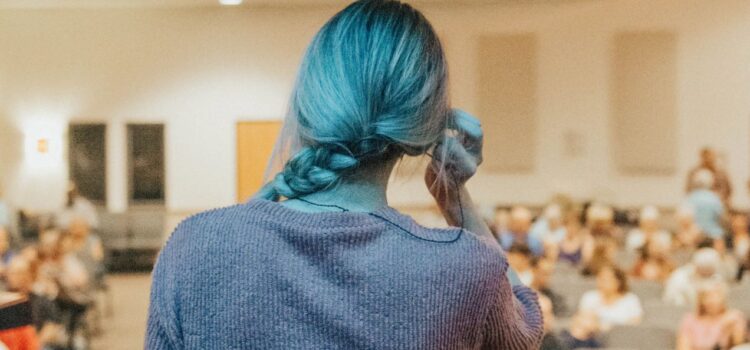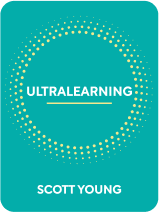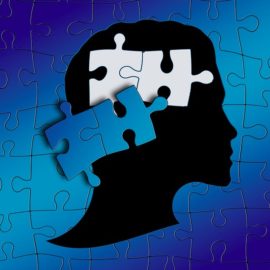

This article is an excerpt from the Shortform book guide to "Ultralearning" by Scott Young. Shortform has the world's best summaries and analyses of books you should be reading.
Like this article? Sign up for a free trial here .
What is direct learning? How can learning directly produce long-lasting results? How does direct learning affect knowledge transfer?
Direct learning is an idea that says you learn best when you practice a skill in the environment that you will use it in. Many people avoid direct learning because it pushes you out of your comfort zone and it takes more effort than traditional learning methods.
Keep reading to learn how direct learning can help you learn faster and retain more information.
What Is Direct Learning?
Another critical component of self-directed learning is the ability to learn directly. What is direct learning? Directness is the idea that you best learn a skill when you practice it in the environment you plan to use it in. For example, if you want to be a great public speaker, rather than buying a book on public speaking, find opportunities to practice public speaking.
We avoid being direct in our learning because we either don’t want to step outside of our comfort zones, we’re uninspired, or it’s time-consuming. For example, we download an app or buy a book because, although this method doesn’t produce long-lasting results, reading about a skill provides a sense of satisfaction without the need to practice it. But if you want to truly master a skill or topic, always immerse yourself in opportunities for direct practice.
Is Learning Transferable?
Transfer occurs when you can use a skill you’ve mastered in contexts beyond the original context. This is the ideal outcome for learning of any kind. Without transfer, we would have little ability to function in our lives, as we would have to learn everything as an isolated skill right down to the minutia.
There used to be a widely accepted theory called formal discipline theory, which suggests the brain is like a muscle, and expanding its capacity for memory, focus, and reasoning improves overall learning. However, new research indicates this theory is too broad, and what we learn is nowhere near as transferable as expected, at least not over long distances.
For example, studies show if a student takes an intro to psychology class in high school, it doesn’t help them if they take an intro to psychology class in college. In a separate study, fresh graduates were quizzed on economics topics, and those who had studied economics had the same results as those who hadn’t even taken a class. Yet another study found that students who learn by studying specific example solutions are frequently unable to find solutions for problems that differ from those examples.
How Does Direct Learning Affect Transfer?
While it’s difficult to transfer learning over longer distances, when you learn something in a way that applies directly to the area you want to use the knowledge for, the knowledge will not need to transfer as far. For example, if you learn yoga, then learn gymnastics, that knowledge will transfer more easily than if you learn yoga and then attempt to learn computer coding. Both yoga and gymnastics require flexibility, strong core muscles, and balance. Computer coding is far more mental than kinesthetic.
Even when we are isolating what we’re studying, there are always details learned that can be applied to a number of experiences that may on the surface have nothing to do with the topic or skill studied. This is why it’s so important to practice what you’re learning in real-life situations, as opposed to the controlled environment of a classroom. Regardless, we need to embrace the reality that the learning environment we choose impacts our ability to transfer knowledge. Learning a new language by immersing yourself in it will always better support you to master the language in practice than studying it in a classroom will. It’s much more difficult to learn something in an artificial environment and then attempt to transfer those skills and knowledge to a real-life scenario.
How Do You Practice Direct Learning?
Direct learning is difficult and requires more discipline than taking a class or learning from a book, but when you persist, you become an overall better learner than those who stick to traditional methods.
Use the following tactics to practice directness.
Tactic #1: Learning Projects (Instead of Classes)
Projects are more valuable for ultralearners than classes because a project requires you to create a result. If you need to create something, it forces you to learn better how to do that. Classes can provide a lot of information, but without practicing that information directly, you may not actually learn anything of significance. For example, say you want to learn animation. You could take a class, but you will learn it more deeply if you create an animated short instead.
Tactic #2: Immersion
To immerse yourself means to place yourself directly in the environment that requires the skill or subject you’re learning. Immersion involves more practice than anything else and will help you to learn by exposing you to unpredictable, real-life scenarios that you would never encounter in a traditional learning setting like a classroom. For example, you learn a new language by spending three months in the native country of the language.
Tactic #3: Simulation
Sometimes you will not be able to directly access or replicate the real-life scenario you intend to use the skill in. In this case, replicate the “cognitive features” of the actual experience. Cognitive features are the knowledge and tools that you will use to make choices in real-life situations.
For example, if you want to win a trivia-based game show, you won’t be able to go on the show over and over again to practice the actual experience. You’ll need to somehow replicate it in isolated exercises and activities. This might mean finding out what questions have been asked on the show in the past, studying them, then practicing with a buzzer in front of an audience of your peers. With this approach, you expose yourself to the cognitive elements you’ll experience when you participate in the real show: the question-asking structure, the pressure of an audience, and the sound element of the buzzer.
Tactic #4: Overachievement
Practice what you’re learning in an environment that will demand the highest skill level. It may be overwhelming at first, but once you push through your discomfort, you set yourself up to learn at a deeper, higher level. You also hone a skill that will support your long-term learning.
One of the ways you can do this is by planning to take an exam, creating a way to publicly share your learning results, or setting a benchmark that’s well above your skill level. For example, if you want to master painting, rent a studio for an art exhibition. If you know you’re going to be putting your paintings on display, you may push yourself harder in your learning process than if your results were only going to be viewable by you.

———End of Preview———
Like what you just read? Read the rest of the world's best book summary and analysis of Scott Young's "Ultralearning" at Shortform .
Here's what you'll find in our full Ultralearning summary :
- How a formal education doesn’t open the doors it once could
- The 9 core principles that can help you master any skill
- How to create a self-directed learning project to help you advance in your field






